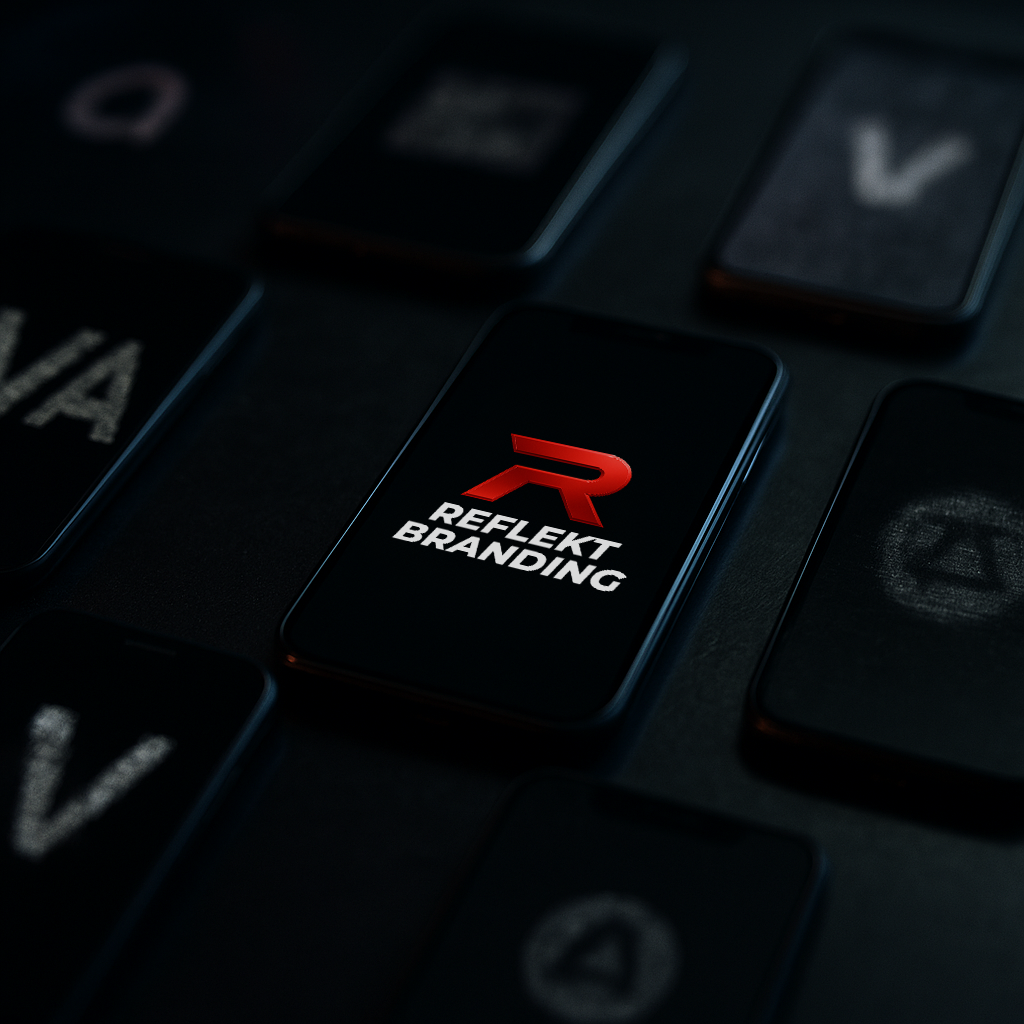Mobile-First Brand Identity: Why Your Logo Might Be Failing on a Phone

More than 70% of web traffic happens on mobile. That means your brand identity isn’t being judged on a glossy desktop screen—it’s being judged on a phone, often in terrible lighting, with half the attention span of the user. If your brand doesn’t hold up there, you’re already behind.
Here’s what you need to lock down:
1. Logos Built for Scale
Your logo has to work at 16px just as well as it does on a billboard. If your design loses clarity when shrunk to app-icon size, you don’t have a logo—you have a liability. Build responsive logo variations into your system: full lockup, simplified mark, favicon.
2. Typography That Survives Small Screens
That elegant, thin typeface you love? On mobile, it looks weak and unreadable. Choose fonts with strong legibility at small sizes. Test them directly on devices, not just in your design file. If users need to zoom to read, you’ve already lost them.
3. Color and Contrast That Hold Up
Mobile screens vary in brightness, glare, and resolution. Your brand palette must perform under those conditions. High-contrast pairings keep text readable in sunlight. Weak color choices wash out and make your brand look sloppy.
4. Iconography That Works in Pixels, Not Just Slides
Every icon should be simple enough to survive a 24px square without losing meaning. Over-detailed graphics blur into noise on mobile. Strong iconography communicates instantly and extends your identity system without the need for text.
5. Responsiveness Written Into Your Guidelines
Don’t let “mobile” be an afterthought. Define how your assets behave across breakpoints. What does your header logo look like on a phone? How should it appear in a social media profile picture? These rules belong in your brand standards, not left to improvisation.
6. Speed as Part of Identity
Heavy visuals may look good in a pitch deck, but slow load times kill perception. A “premium” brand can’t afford a site that lags on mobile. Optimize every file. Your identity is judged not just by what people see, but how fast they see it.
7. Hierarchy Matters More on Mobile
Small screens force ruthless prioritization. Decide what stays visible: logo, headline, call-to-action. Strip away the clutter. A clear hierarchy makes your brand feel intentional, not improvised.
8. Platform-Specific Reality Checks
Your Instagram feed, your LinkedIn banner, your email preview—they all crop and compress differently. Test your assets in-platform. A flawless desktop design doesn’t guarantee mobile consistency.
9. Consistency Across Devices
Your brand personality must feel identical on phone and desktop. That doesn’t mean carbon copies—it means aligned tone, visuals, and experience. If your mobile execution feels like a watered-down version, you’ve created brand confusion.
10. Test in the Real World
Don’t just review designs on your studio monitor. Check them in the environments your audience lives in—different phones, outdoor glare, low-light settings. Weak brands only look good in mockups. Strong brands hold up anywhere.
Mobile isn’t a channel. It’s the dominant stage where your brand is judged first. If your identity doesn’t perform flawlessly there, you don’t have a modern brand—you have a relic.